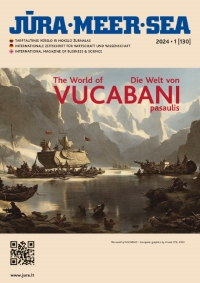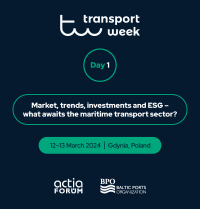Barcelona eurorail link gives Barcelona chance at 25pc of Asia-Europe cargo
2012 03 06
- Details
THE Port of Barcelona has removed a railway bottleneck that has long prevented it from winning Asian cargo bound for south western Europe - a solution that seemed so obvious from a look at the map.
The problem was the difference between the Spanish and French railway gauges which was solved last year by the laying of a new euro-gauge track to the French border linking to Lyons in central France and east coast Bordeaux.
"It was crazy seeing 85 per cent of Asian cargo for Europe go right past our port from Suez to cruise an extra five days to get to northern Europe only to have it moved south again by train or truck," said the port's delegate to China, Juan Dedeu, during a visit to the Shipping Gazette to announce the opening of Barcelona's Hutchison terminal today (March 6).
Mr Dedeu, also president of China Consultants, said a ship calling to Barcelona, 150 kilometres south of the French border on the Mediterranean, would save five days transit to circle the Iberian Peninsula and western France with 25 per cent of the cargo having to be railed or trucked south again.
Differing rail gauges necessitated costly intermodal transfers at the border, the expense of which killed any hopes of a high volume trade, much less dreams of becoming a major Asian gateway to Europe, he said.
Another factor is that European road and rail networks focus on northern capitals, making them better served by Channel and North Sea ports. Le Havre combined with rivals Antwerp, Zeebrugge, Rotterdam, Hamburg and Bremerhaven form a mega magnet for high volume cargo, to which one can add the English ports across the channel.
Mr Dedeu said these disadvantages reduced infrastructure development and kept southern European ports tied to their immediate hinterlands. The French port of Marseilles and the Italian port of Genoa suffers in much the same way.
Mr Dedeu said Hong Kong's Hutchison Port Holdings was instrumental in creating the rail link north by insisting something be done before it committed more to Barcelona. Less than a year ago, a third euro standard line was laid alongside the Spanish gauge to the border.
Hutchison's Barcelona TERCAT terminal, established in 1990, covers 47 hectares, has a 1.08-kilometre quay length with 14 metres depth alongside. The new terminal at Muelle Prat that opens today, adds another kilometre of quay, 60 hectares of yard space and has 16 metres alongside.
While Barcelona suffered a poor fourth quarter, volumes increased a record 13 per cent to 1.4 million TEU from January to August. At full buildout Barcelona will create a capacity of 12.8 million TEU.
"The cranes are there from China, though not put up. We have 30 people from Shanghai putting them up now. If business goes well, we will move more quickly, if it is slower then we will not build as fast," Mr Dedeu said.
The European Union has been helpful in addressing the concerns of a joint-lobby formed by otherwise rival ports of Genoa, Marseilles and Barcelona to put in additional north-south infrastrucuture and foster southern European logistics development.
"We are together on this issue," said Mr Dedeu, "but after that we compete. We are good friends, but we are also competitors."
To his mind, Genoa's location is not advantageous to fully exploit and expected diversion of Suez shipping from the UK-north continent port range and Marseilles is too strike-prone to be reliable.
"We sat down with our unions and said, we have a chance to become a major European port, but we cannot have strikes. They agreed," he said.
While it seems obvious looking at the map that southern ports should be the major intake points for cargo going through Suez, many shippers feel that the sophistication of northern European logistics trumps less sophisticated road and rail systems of the south.
"We are not after all the cargo - not even 50:50," said Mr Dedeu. "We are looking at 25 per cent rather than the 15 per cent we get today."
He also pointed to EU regulations that will tax carbon emissions from ships in the second half, saying that five days extra steaming will be more costly for shippers than discharging cargo in southern European ports like Barcelona.
Source Shipping Gazette - Daily Shipping News
The magazine SEA has been published since 1935
International business magazine JŪRA MOPE SEA has been published since 1999
The first magazine in Eurasia in the four languages: English, Chinese, Russian and Lithuanian
|
|










